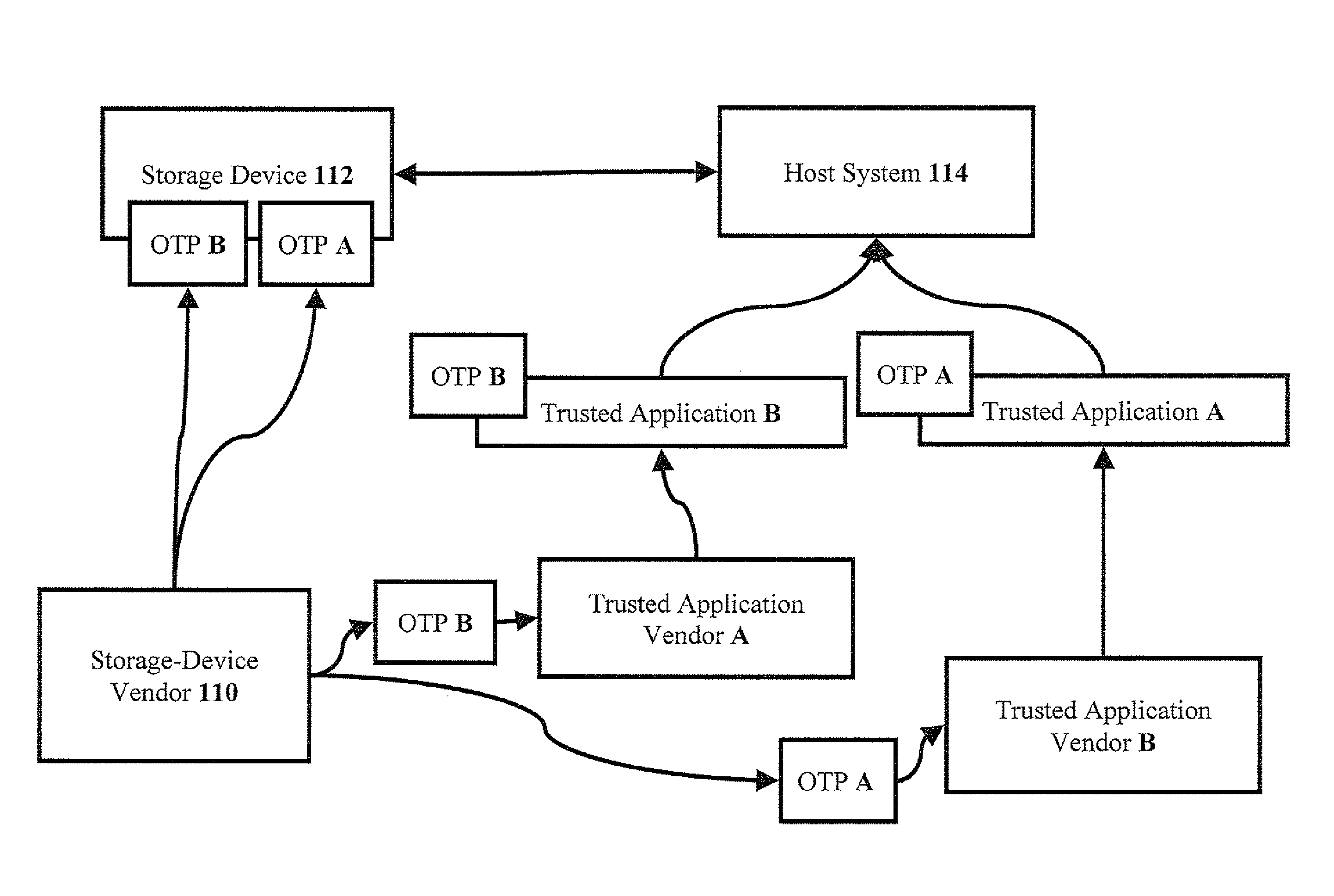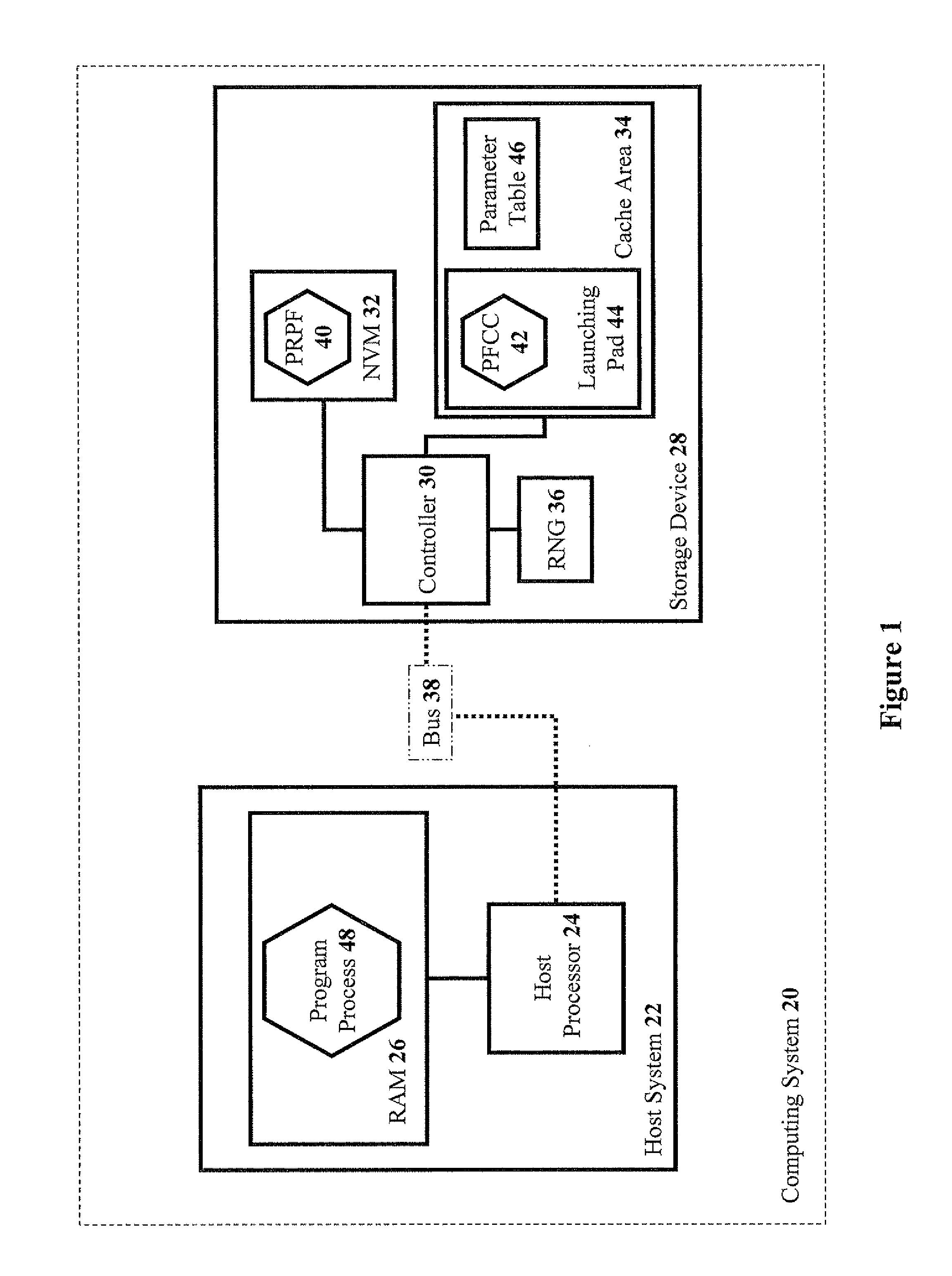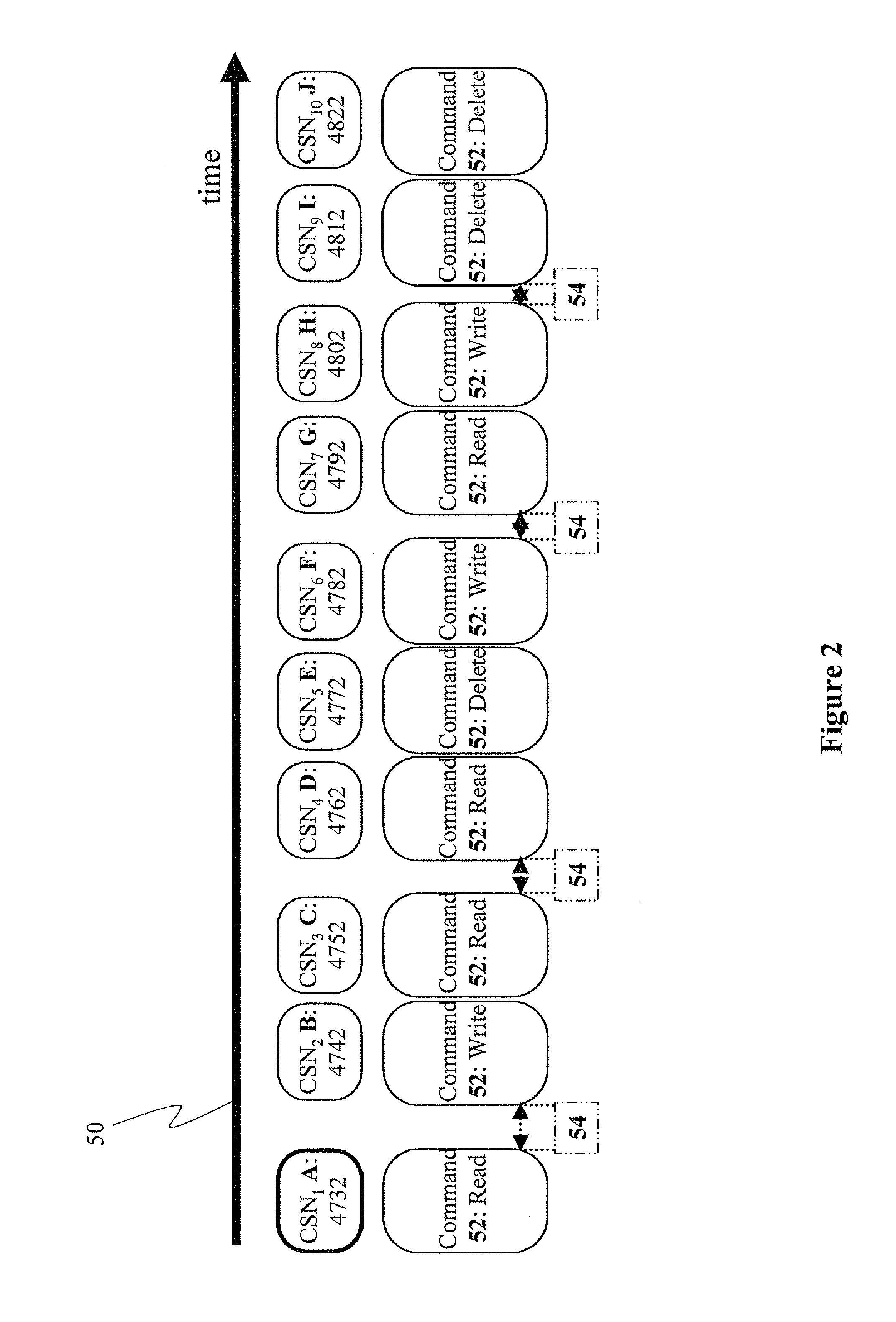Methods and systems for command-flow continuity application-authentication
a technology of application authentication and command flow, applied in the field of methods and systems for command flow continuity application authentication, can solve the problems of damage to the storage device, storage device has no way to recognize unauthorized commands, etc., and achieve the effect of reducing the time that the hacker has
- Summary
- Abstract
- Description
- Claims
- Application Information
AI Technical Summary
Benefits of technology
Problems solved by technology
Method used
Image
Examples
Embodiment Construction
[0086] The present invention relates to systems and methods for limiting access, to data in a storage device, only to privileged resident-program files that have been launched from the storage device. The principles and operation for limiting access only to privileged resident-program that have been launched from a storage device, according to the present invention, may be better understood with reference to the accompanying description and the drawings.
[0087] Referring now to the drawings, FIG. 1 is a simplified schematic block diagram of a computing system, according to preferred embodiments of the present invention. A computing system 20 having a host system 22, including a host processor 24 and a RAM 26, and a storage device 28, including a controller 30, an NVM 32, a cache area 34 (i.e. volatile memory), and a RNG 36, is shown in FIG. 1. Host system 22 and storage device 28 are connected via a bus 38 (e.g. a universal serial bus (USB)). A PRPF 40 resides in NVM 32 of storage d...
PUM
 Login to View More
Login to View More Abstract
Description
Claims
Application Information
 Login to View More
Login to View More - R&D
- Intellectual Property
- Life Sciences
- Materials
- Tech Scout
- Unparalleled Data Quality
- Higher Quality Content
- 60% Fewer Hallucinations
Browse by: Latest US Patents, China's latest patents, Technical Efficacy Thesaurus, Application Domain, Technology Topic, Popular Technical Reports.
© 2025 PatSnap. All rights reserved.Legal|Privacy policy|Modern Slavery Act Transparency Statement|Sitemap|About US| Contact US: help@patsnap.com



